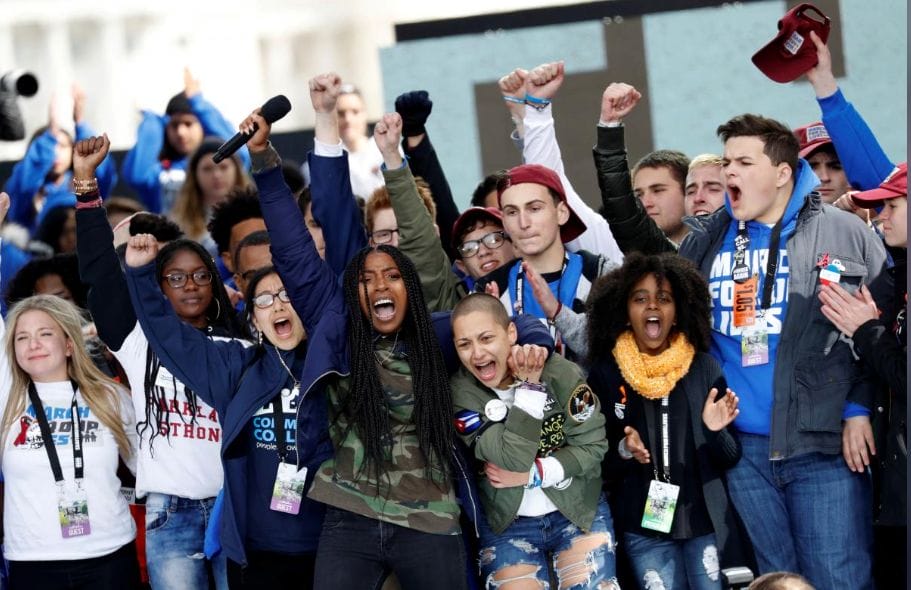
7 Ways America Has Changed Since the March For Our Lives
You’ll never have the comfort of our silence again.
Nearly a year ago, the politics of gun reform experienced a seismic shift. A group of young people, angry that our leaders failed to keep them safe from gun violence, decided to take a stand and make their voices heard. Not just by a senator, or a congressperson, or even the president, but by the whole world. This decision resulted in one of the most historic political demonstrations in modern American history.

The March For Our Lives in Washington, DC, drew over 800,000 people and inspired sister marches on every continent. What began with students from Parkland, Florida, ultimately brought together young leaders and concerned Americans from all over the country. The March For Our Lives marked a turning point in America’s conversation on guns.
These young leaders reminded the country of the power of protest. Their calls for action echoed across the country and created momentum that sparked lasting change. On this first anniversary of the March For Our Lives, we’re taking a look back over how the gun safety movement has changed since millions of Americans poured into the streets on March 24, 2018.
1. Student activists cemented their role as leaders in the gun safety movement.
After the march, the pundits came out in full force. Even while they marveled at the size of the crowd, they couldn’t help asking: Could this energy last? Wouldn’t these students eventually give up and move on? It quickly became clear: the March For Our Lives was not just part of a passing moment, but a lasting movement destined to effect real change.

Weeks later, the original student organizers of March For Our Lives announced Road to Change, a nationwide bus tour to register voters and have real conversations with people on all sides of the issue. They continued to emphasize the fact that our gun violence crisis is about far more than the mass shootings that get the majority of media attention.
They joined the Chicago Peace March, and made certain the voices of students from communities experiencing the pain of everyday gun violence were amplified onstage and in the media. Student leaders also hit the road with organizations like Giffords in the lead-up to the 2018 election. The Vote Save Lives tour gave a platform to young Americans in places like Minneapolis, Minnesota, and Houston, Texas, so they could engage in a conversation about what legislators need to do in order to address this public safety threat.
2. Safer gun laws were passed in states across the nation.
Since the Sandy Hook massacre, lawmakers in states across the country have responded to federal inaction with courage and conviction, turning over 280 gun safety bills into law. That trend accelerated in the aftermath of the Parkland shooting, as young leaders demanded action.
Before Parkland, Florida had some of the weakest gun laws in the country. In 2018, lawmakers approved a legislative package that created an extreme risk protection law, established a higher minimum age for buying firearms, and strengthened waiting periods.
Giffords Law Center’s Annual Gun Law Scorecard raised Florida’s grade from an “F” to an “C-” because of this lifesaving progress. Florida was among eight states to raise its grade in 2018, the first year since 2012 that no state was downgraded an entire grade because of the passage of dangerous gun lobby bills. 67 gun safety bills were signed into law in 2018, including by Republican governors in 14 states.

3. Tens of thousands of Americans spoke out against bump stocks.
In the final days of 2018, the Trump administration announced that the Bureau of Alcohol, Tobacco, Firearms, and Explosives (ATF) was banning the production and distribution of bump stocks. But first, ATF had to gather input from the public.
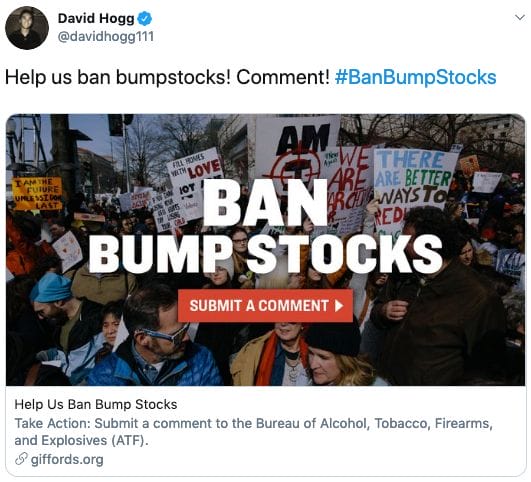
Many expected the gun lobby would do everything it could to spread dangerous misinformation and flood the ATF with responses opposing any ban. But Giffords and student leaders called on Americans to take action and demand regulation of these dangerous devices.
These efforts helped reverse the course of the comment period. The results: 73% of comments submitted to ATF called for the ban. Now, because young leaders and activists encouraged people to speak out, the federal government is moving forward with banning the device used to kill 58 people and injure more than 500 in the 2017 Las Vegas massacre.
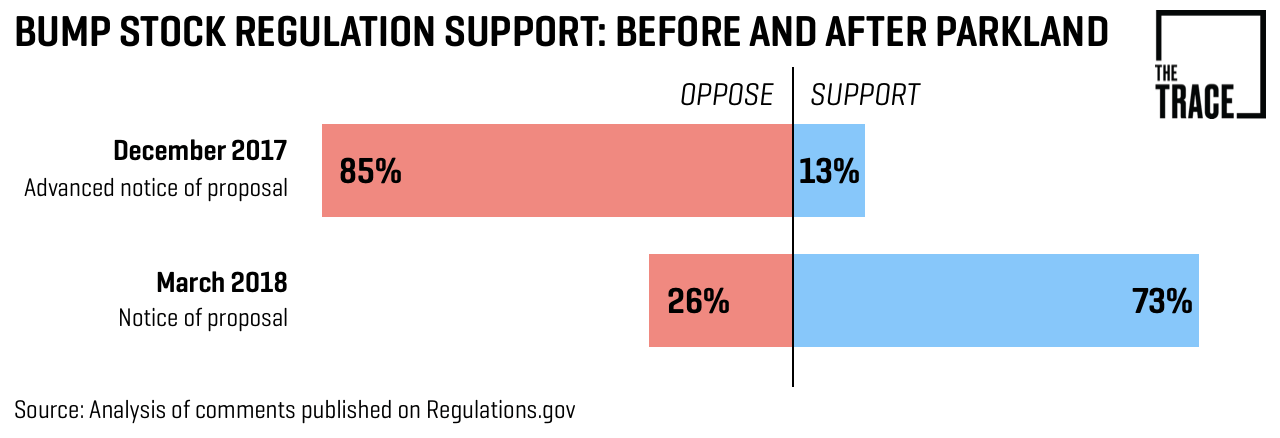
4. Corporate America took a stand against gun violence.
The business community made unprecedented commitments to gun safety in 2018, reflecting the growing demand for gun safety among American consumers.

From retailers to grocery stores to major banks, a long list of some of America’s most well-known brands cut ties with the NRA and took action to help solve our nation’s gun violence epidemic. Three companies in particular have been at the forefront of this important trend: Dick’s Sporting Goods, Levi Strauss & Co, and TOMS.
[3 Companies Working to End Gun Violence]
5. The NRA’s approval rating is underwater… and shows no sign of bouncing back.
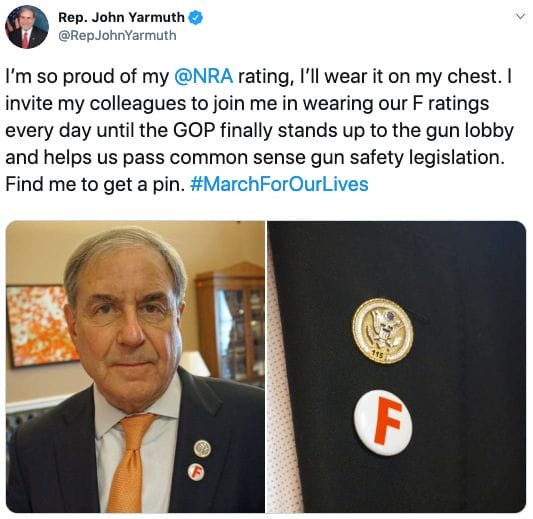
In the span of a year, the NRA’s reputation plummeted and failed to rebound. The NRA is now viewed by half of voters as primarily a political lobbying organization, rather than an organization for gun hobbyists. The group became a major net-negative for those associated. Members with an “A” rating from the NRA now hide their endorsement, while other members proudly wear the NRA’s “F” lapel pins. The NRA even went so far as to remove old grades from their website so they can’t be used to tarnish their champions. And, for the first time in recent memory, gun safety groups, like Giffords, outspent the NRA in the 2018 election.
5. Young people voted in record numbers.
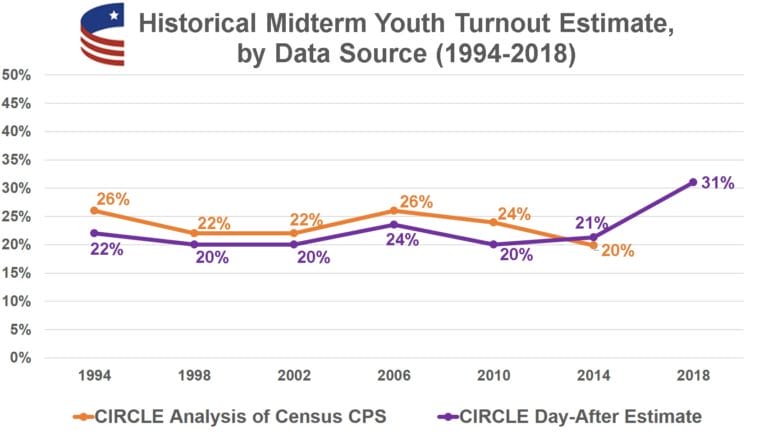
Voter turnout among young people ages 18–29 rose to 31% in the 2018 election, which marked the highest youth turnout in years. Young people across the country funneled their hunger for the change they called for at March For Our Lives into participation at the ballot box on Election Day. This record turnout would not have been possible without organizing by March For Our Lives, National School Walkout, and Our Lives Our Vote.
6. Gun safety became a defining issue of the 2018 Midterms.
At the March For Our Lives last year, voters pledged that if our leaders in Congress failed to take action to keep us safe, we’d elect new leaders who would. In the months that followed, Americans set out to defeat NRA-backed candidates across the country—and together with student activists, that’s exactly what we did. A new generation of leaders became part of a historic gun safety majority in the US House of Representatives as 40 NRA-backed candidates lost their seats.
Just a few years ago, talking about gun violence was a political third rail, and many politicians ran away from the issue. In the 2018 midterms, gun safety moved to the forefront of campaign platforms, events, and advertisements.
[Giffords Elevates Gun Safety Champions; Takes on NRA in Congressional Battlegrounds]
7. New leaders in Congress are taking swift action.
There’s a new House majority in Washington, and it takes gun violence prevention seriously.
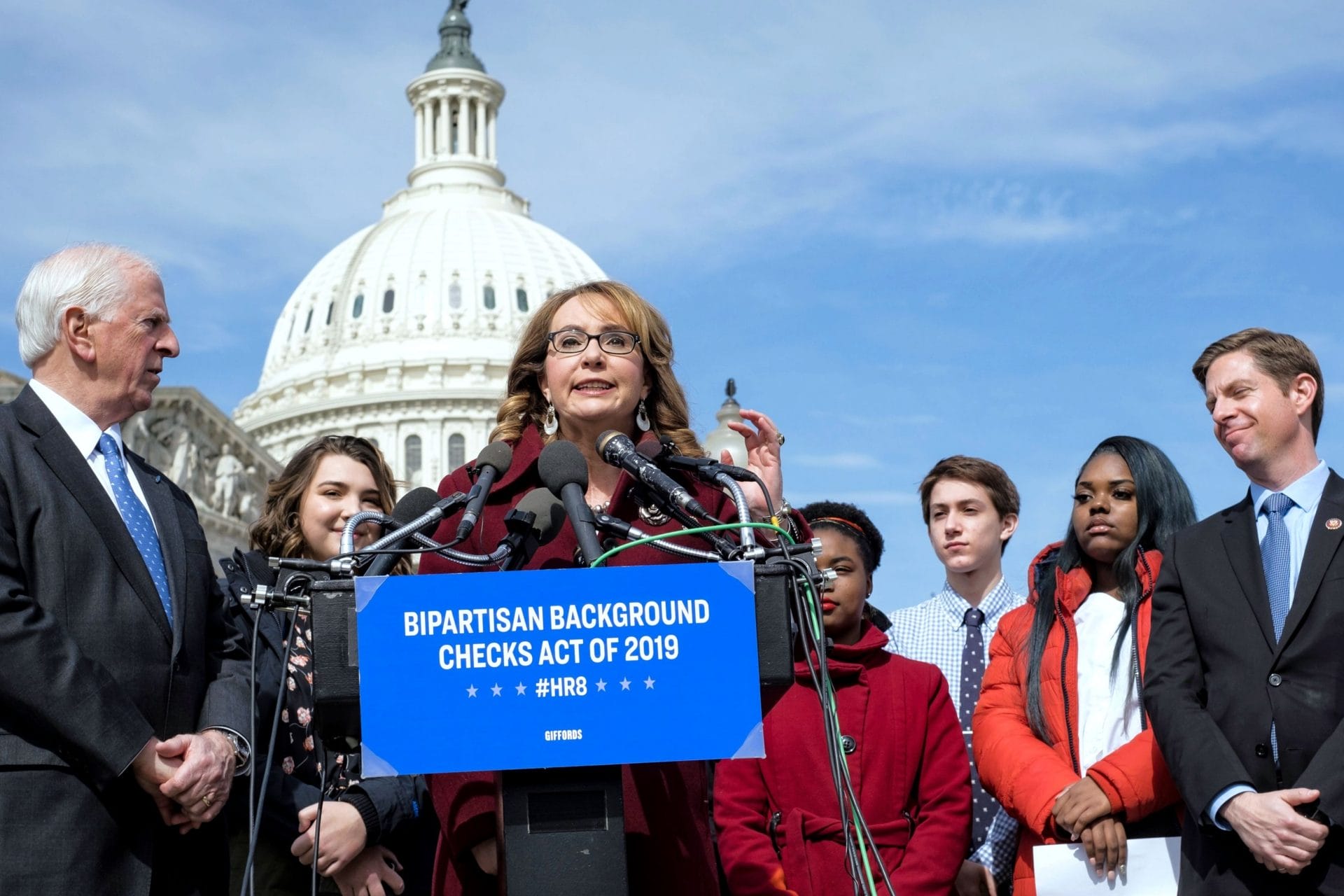
On January 8, Gabrielle Giffords stood alongside Speaker Nancy Pelosi, Gun Violence Task Force Chairman Congressman Mike Thompson, Congresswoman Lucy McBath, student activists, and gun violence survivors to introduce H.R. 8, the Bipartisan Background Checks Act. It passed the House on February 27—the first piece of gun safety legislation to pass in over a decade. A day later, the House passed H.R. 1112, a bill to address the Charleston loophole.
[Gun Safety Steps Into the Congressional Spotlight. (And it’s Here to Stay.)]
Bottom Line: March For Our Lives marked a turning point in America’s conversation on guns.
If the last year proved anything, it’s that raising your voice does make a difference.
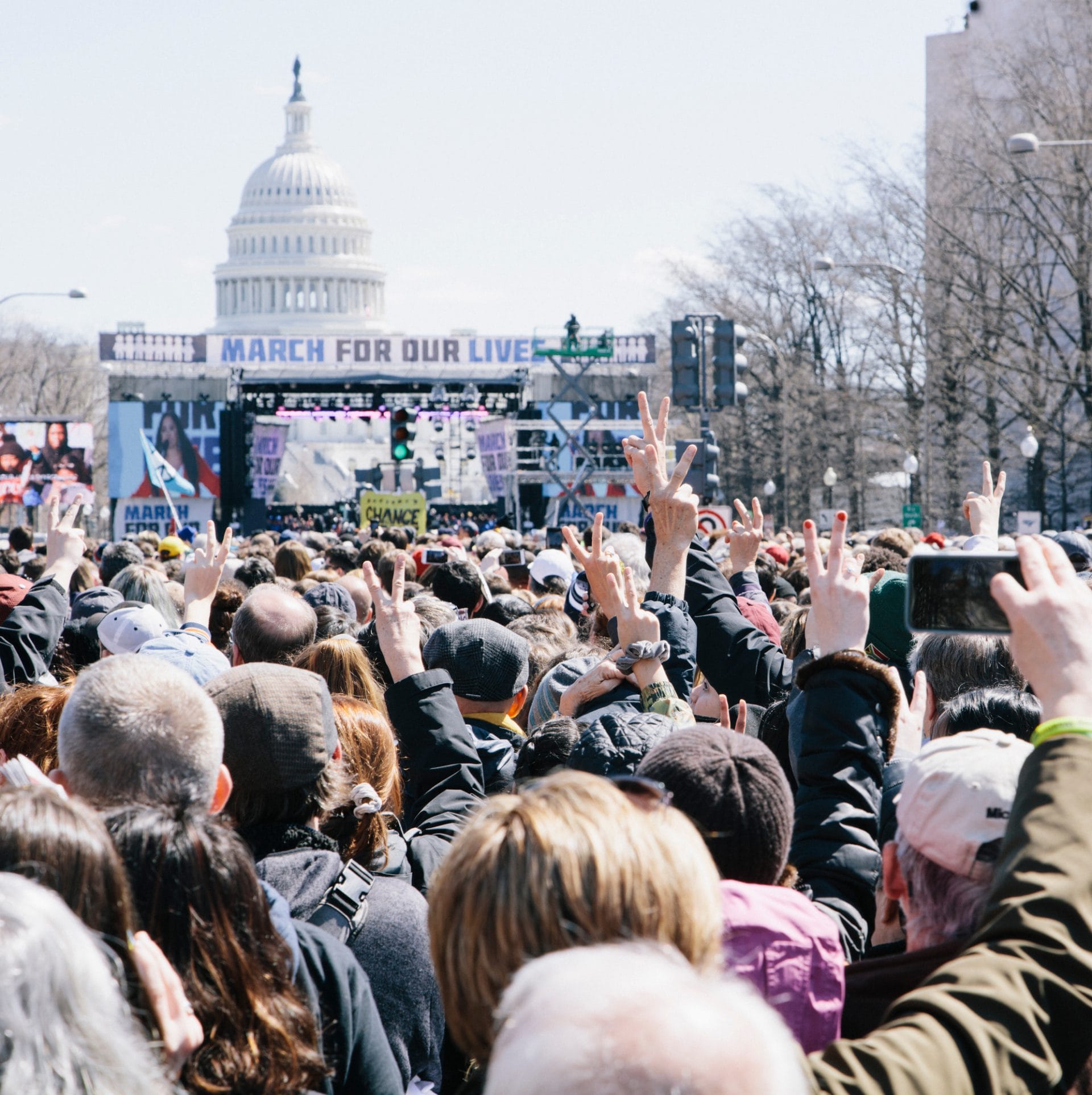
Questioning lawmakers, marching in the streets, supporting legislation, encouraging family and friends to embrace gun safety—it all makes a difference. We won’t soon forget the powerful speeches we heard at last year’s March For Our Lives, or how people from all walks of life came together to call for gun safety reform.
But it’s in the days and months after that the gun safety movement has shown it’s here to stay. We can’t let up now. The gun lobby may have lost allies in Washington, but they still have deep pockets and a president they spent $30 million to elect. We must continue to uphold the legacy of March For Our Lives. We must never give up in this important fight. If we keep holding our leaders accountable, we will make history.